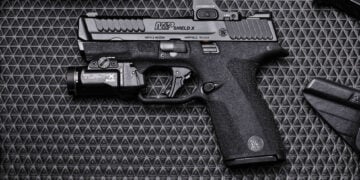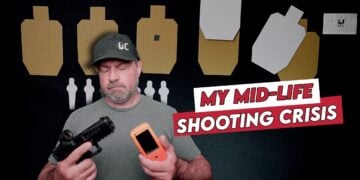
Last week an unspeakable, very terrible tragedy occurred… the second largest mass murder in U.S. history, second only to the Virginia Tech University killing of 33 in 2007. On December 14, 2012 a 20-year-old shooter, Adam Lanza, took 3 weapons (2 pistols and M4 short carbine rifle) and massacred 26 young children, teachers, staff, and administrators at Sandy Hook Elementary School in Newtown, CN, then killed himself. He also killed his mother, a teacher at the school. These senseless illogical murders were not random violent shooting acts, but were the deranged killings of a psychotic perpetrator who purposely planned these goal-directed acts in advance. As the psychologist Dr. Drew initially reported for this tragedy, we are in a new world today and evil people act out their rage by doing violent irrational things, like in this case killing 20 young elementary children, the principal, school psychologist, staff, his own mother and family member, and then committing suicide. Psychologists reported today that there must have been some indication or evidence that he had a problem before, demonstrating some unhealthy, non-productive behaviors at home or at school. These killings suggest a chronic predictable unhealthy problem was present and parents and others did not take appropriate actions, according to some psychologists. So, it is of paramount importance that we take the time to observe, note, and act on unhealthy motivations, behaviors, and irrational tendencies early on, to prevent escalation to violent behaviors and possible murderous or very harmful actions. We should also try to understand criminals and their potential violent, irrational criminal mindsets to help deter these heinous actions and promote healthy relationships, as well as guide us in choosing our responses to deadly and non-deadly force encounters. Remembering, that GUNS do not kill people, but rather deranged PEOPLE kill others through their usually conscious and negative irrational efforts to use the weapon in an evil way. The gun is merely a tool, like a spoon, shovel, knife, piano, or baseball bat is a tool. In the hands of some, tools can be an advantage, helpful, good, and beneficial, but the same tool in the hands of a deranged, unhealthy person can be a disadvantage, bad, and a dangerous weapon, used to harm or kill others as they so choose. These are inexplicable, like the December 3, 2012 killing of a 58-year-old man who was pushed from a Manhattan, NY subway platform into a train and killed by a 20-year-old man mumbling incoherently to himself. We must change peoples’ hearts and minds, because if someone intends to do damage they will find a way and use any kind of weapon to do it or turn a common tool into a weapon for evil purposes. Remember, laws do not really change hearts and minds nor dedicated evil intent. Please pray for these victims and families. Here are some other tragic examples.’
In December, 2012 in Nashville, TN a TV reporter Erika Lathon, was shot after she complied with a robber’s demands. She was withdrawing cash from a bank ATM. Police said the robber demanded money from Lathon, who complied, but he then shot her and ran away.
Also, in October, 2012 there were three similar cases in St. Louis, MO. A 27-year-old woman was shot as she walked to her car near a Children’s Medical Center. The man took her purse and shot her in the face with a pistol, police said, even though she cooperated. A similar attack happened about eight blocks away when a 20-year-old woman was robbed of her cellphone and tablet computer. The robber then shot her twice, after she complied. Another happened in the same month when a man, 26, and woman, 30, were also robbed. Police said the gunman approached them, showed a 9mm gun and got a purse and cellphone from them, then shot the man in the hand and leg. The robber ran off in all of these robberies, after shooting those who complied.
In Algona, IA and Humboldt, IA, a robber murdered two female convenience store clerks within an hour, after they had fully complied with his demands. Vicky Bowman-Hall of Algona did everything the masked robber told her to do. The 47-year-old mother of 11 filled the duffel bag with cigarettes and money from the convenience store cash register. Then the robber shot her in the head and she died a short time later. About an hour later, the scene repeated itself 25 miles away in Humboldt. There, the bandit shot and killed 61-year-old clerk Sheila Myers, after she cooperated. So, robbers inflict harm even when victims fully comply. They also harm victims when they do not have any or enough of what they want.
In Chicago, IL recently an armed robber shot a victim and fled, after the robber learned that the man had no money to steal. The victim said he had no money, so the robber was angry and just shot him because he had no property. Robbers also inflict harm when the victim has insufficiently valuable property. An example is a Hartford, CT home invasion in which the home owner was shot by a robber after the robbers determined the man’s property wasn’t valuable enough to have been worth their time. Another example is a St. Petersburg, FL deli robbery in which a robber shot the deli owner multiple times after being dissatisfied with the amount of money in the cash register, despite the owners full cooperation.
As these and many other cases demonstrate, complying with a robber’s demand does not guarantee your safety and avoidance of being harmed. Recognize that compliance and cooperation can still cause you harm. Experiences as a legal affairs director and a human resources manager in industry, government, and education and a master’s degree in psychology help me understand this firsthand. The unfortunate examples above and similar regularly-occurring robbery, assault, rape, and murder cases send a message to us of how dangerous criminals can be, even if the encounter appears to initially be only a robbery of property. So, it is very important for us to understand the criminal mindset, their motivations and behaviors, as well as our own goals, priorities, motivations, skills, and behaviors for critical decisions we must make in such an unplanned encounter. It is important to think ahead and anticipate such possible encounters and our range of choices for responding to a particular situation, as much as this is possible. Of course, it is not possible to anticipate all possible assaults, encounters and situations, but generally we must decide ahead if we have the mindset for shooting someone, IF they threaten our life or can cause us serious bodily harm. No one can tell you how to respond or what to do in any specific scenario you might be involved with, but your situational awareness of the particular elements in any unique situation is key. Of course, this awareness will help us avoid many of these situations and is of paramount importance. Once we understand our personal mindset and survivability goal, our willingness to respond in the face of a deadly threat and related legal parameters, and the choices we might have (including avoidance, non-escalation, retreat, and non-lethal responses as appropriate), it is then important to understand the mindset of the violent criminal and their motivations and behaviors.

Dr. Stanton Samenow, a renowned criminal behavior psychologist and researcher, has interviewed, studied, and offered his professional interpretations and conclusions about the nature of the criminal mind. In essence, he concludes that the different manifestations of criminal behavior are just a matter of style and the extreme selfishness and lack of concern and empathy for others by the criminal, with self-gratification being their top if not sole priority. In one of his books, he stated that the criminal shuts off empathy and sentiment just like someone flips off a light switch. Sentiment and savage brutality reside side-by-side in the same individual and one has no bearing on the other. He gives some interesting comments in his interviews with violent criminals. One criminal who committed rape and other violent crimes said “I can change from tears to ice and back again.” This individual had a soft spot for animals and would nurse an injured dog to health. He would become teary eyed during movies that were sentimental and attended church frequently. When it came to his intended victims, however, there was no empathy or sentiment. Dr. Samenow also recalled the murderer who refused to step on an insect because he “didn’t want to kill anything living.” Yet, he would snuff out a person’s life without a second thought.
Most people have no idea of how totally foreign it is for a criminal to put himself in the place of another person. A very large number of criminals see the world as a chessboard with people and objects being like pawns for him to maneuver at will and Dr. Samenow refers to this as a “sense of entitlement.” He says it goes beyond that, since the criminal does not regard a victim as a victim. Instead, with his selfish mindset he sees himself as the victim, because now he is in trouble and faces a possible penalty.
Criminals think in such selfish all or nothing terms because believing themselves omniscient and knowing everything, they sense no need to evaluate a situation at any length (unless casing out a place to commit a crime). For the criminal mind, just thinking something makes it so. If a person is certain of his omniscience and infallibility, he has no reason to engage in the rational mental processes that are necessary for making decisions, like defining the problem, establishing a realistic objective, suspending judgment, gathering facts, evaluating alternatives, and selecting a rational, thought-out solution. If criminals want something, they obtain it very quickly, one way or the other without rational decision-making and concern for their victims. As Samenow reasons: “This all-or-nothing selfish thinking invariably leads to the criminal constantly experiencing frustration, disappointment, and anger at a world that does not give him what he thinks he is due.” He experiences life on the spur of the moment, basing what he does on the expectation that he is absolutely correct and that others will do whatever he wants. Without empathy and failing to take other people’s needs and wishes into account, the criminal constantly encounters barriers to his plans. This threatens his view that he knows everything, that he is in control, and that others will agree to his demands. For the criminal mind, the opposite of winning and affirmation, is loss and degradation, without any middle ground. Thus having almost all peaks and valleys in his emotions and behaviors is the criminal’s selfish response to his own unrealistic view of himself and others, rather than a mere bipolar illness.
Assaults, bullying, and attacks occur for a criminal’s amusement or self-gratification. He builds himself up by tearing others down says Samenow. He reports that a man in jail told him that he thought he could do anything he wanted to another inmate with impunity. He honed in on what he considered the man’s fear, his reticence to stand up for himself, and then did whatever he pleased including secretly urinating in the man’s water cup. The more terrified his cellmate was, the greater the contempt for him that the perpetrator had. It is very difficult for us non-criminal, non-violent citizens to understand this irrational criminal mindset, yet alone begin to plan and organize a possible rational response among our choices for dealing with it… rationality meets irrationality. As Dr. Samenow explains. For the criminal, being in charge is integral to his self-image. Anything less than having complete control is not acceptable to him. Thus, he resorts to any means to achieve an end — deception, intimidation, or brute force. This is very different from a person working his way up the corporate ladder, excelling, then being appointed an executive on the merits of his work and leadership. The exercise of control is not for the executive’s own self-aggrandizement. As a leader, he inspires and motivates others and, as a result, the company as a whole wins, with a win-win result… not like the criminal’s win-lose predicament.

Recognize that robbery is primarily an irrational bullying crime against a person’s body and a control issue, rather than a crime against their property. So, a criminal who commits robbery is not the kind of person to whom anyone should expect rational decision making nor wish to trust with their life and safety. Unfortunately, rational compliance with a robber’s demands in the hope that they will decide not to inflict harm can be imprudent sometimes. However, deciding the proper option for your response is very difficult among complex, variable, and uncertain scenarios. What a personal challenge, possible life-altering and difficult decision among too many subjective, dynamic, and situational alternatives! SUCCESS to all of us in our situational decision making.
The reality is that a criminal who is willing to engage in a violent crime such as robbery or home invasion, is not the kind of person with whom one will likely be able to reason with, or from whom empathy and compassion can be expected. Violent criminals have goals, value systems, priorities, attitudes, decision parameters, paradigms, and behaviors different from the vast majority of citizens. Compliance with such a violent criminals’ demands does not guarantee safety. Indeed, those who engage in crimes of violence are often drug users seeking funds to feed their addiction, and when lacking their drug may be unpredictable and irrational. Still other criminals have sexual assault or other violence as their primary goal, with robbery as a secondary goal, making cooperation with the criminal’s demands for property uncertain and your response confusing and possibly ineffective.
Law-abiding, rational armed citizens can save themselves from violent crime and also save other would-be victims by understanding the criminal mindset and deterring criminals from victimizing others in the future. Consider getting training in the fundamentals of firearms safety and shooting, then get your Concealed Carry Weapon License for self-defense.
* Contact Col Ben at (850) 484-3221 or by email to [email protected] for firearms self-defense and concealed carry license training in Pensacola, FL or at your location.










